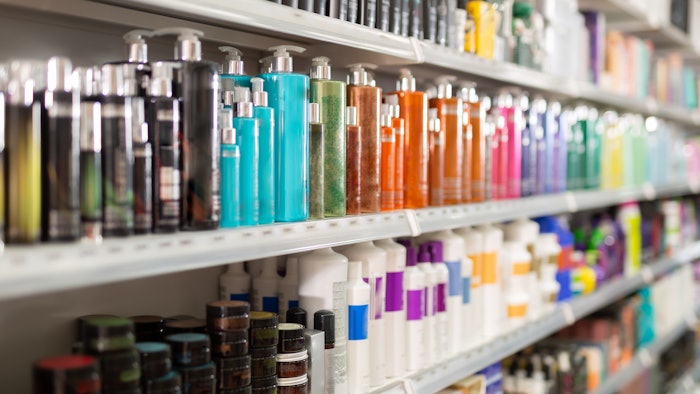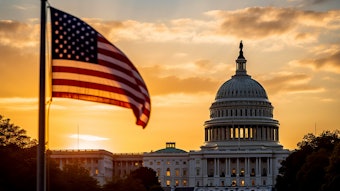
Between June and October 2023, the Asia-Pacific region witnessed significant regulatory changes, particularly in China, where notable regulations on cosmetic pre-market management and post-market surveillance were introduced. Other regions, including South Korea and ASEAN, experienced noteworthy adjustments in cosmetic ingredients and technical standards. Following are brief updates.
Log in to view the full article
Between June and October 2023, the Asia-Pacific region witnessed significant regulatory changes, particularly in China, where notable regulations on cosmetic pre-market management and post-market surveillance were introduced. Other regions, including South Korea and ASEAN, experienced noteworthy adjustments in cosmetic ingredients and technical standards. Following are brief updates.
China: Toxicological Test Methods
On June 12, 2023, China's National Institutes for Food and Drug Control (NIFDC) proposed amendments to the "Inventory of Prohibited Ingredients for Cosmetics"1 and introduced seven draft test methods. This proposal was open for public comments until July 15, 2023.2
The proposed ingredient changes involve listing five prostaglandin analogs, including bimatoprost, latanoprost, tafluprost, tafluprost ethyl amide and travoprost as prohibited ingredients. Aligned with the Organization for Economic Co-operation and Development (OECD) guidelines, the seven test methods are designed for the toxicological testing of cosmetic ingredients. These draft methods include a 28-day inhalation toxicity study, 90-day inhalation toxicity study, two-generation reproductive toxicity, extended One-generation Reproductive Toxicity Study, Skin Absorption-in vivo Method, Acute Inhalation Toxicity Acute Toxic Class Method, U937 Cell Line Activation Test, etc.
China: Personalized Cosmetics
On July 20, 2023, the Shanghai Municipal Medical Products Administration (MPA) unveiled the groundbreaking “Provisions for Management of On-site Personalized Cosmetic Services in Shanghai Pudong New District (Trial).”3 This marks the first comprehensive regulation dedicated to the management of personalized cosmetics. Effectively launched on Aug. 20, 2023, the trial regulation is set to remain in force for two years, concluding on Aug. 19, 2025.4
Comprising 34 articles, this regulation establishes standardized guidelines for on-site personalized cosmetics services. It covers crucial aspects such as licensing, product notification management, institution and personnel requirements, quality assurance and control measures, operation area and equipment management, material and product management and service process management.
The trial regulation is applicable to notifiers and Chinese domestic responsible persons that have set business premises in the Pudong New District and offer on-site packaging and sub-packaging tailored to consumers' individual needs for their notified general cosmetics. However, it excludes children's cosmetics, eye cosmetics and cosmetics containing new ingredients.
China: STSC Amendments
On Aug. 28, 2023, China National Medical Products Administration (NMPA) announced significant amendments to the country’s fundamental technical standards for cosmetics — "Safety and Technical Standards for Cosmetics (STSC).”5 The amendments include:
- Newly designating benvitimod as a prohibited ingredient and setting the impurity limit for prohibited ingredient benzene, which shall not exceed 2 mg/kg;
- Releasing five new testing methods to replace the original methods in "Chapter 4 Physical and Chemical Testing Methods for Cosmetics" in STSC. This encompasses the “Determination of Acrylamide in Cosmetics;” “Determination of Desloratadine and Other 50 Kinds of Components in Cosmetics;” “Thioglycollic Acid and Other 7 Kinds of Components in Cosmetics;” “Determination of Free Formaldehyde in Cosmetics;” “α-Arbutin and Other 3 Kinds of Components in Cosmetics, etc.”
- Introducing 14 additional test methods covering new physical and chemical testing parameters, including pH value, colorants, hair dyes, prohibited ingredients and more. Additionally, new toxicological test methods were incorporated.
Except for the second revision slated to take effect on March 1, 2024, all other changes were implemented immediately upon release.6
China: Children’s Cosmetics
On Aug. 31, 2023, China NIFDC officially enacted the “Technical Guidelines for Children Cosmetics.”7 These outline the basic information for children’s cosmetics, as well as the specific technical requirements for related dossiers, including product name information, formula, executive standard, labeling, testing report, safety assessment report, etc.8
Highlights of the guidelines are as follows:
- Further standardizing and guiding the registration and notification processes of children’s cosmetics;
- Refining the requirements for the safety assessments and the testing of children’s cosmetics; the requirements for toxicological tests and human skin closed patch test results were slightly relaxed;
- Introducing more stringent requirements for ingredient selection and use, and clarifying prohibited ingredients, ingredients not recommended for use in children’s cosmetics and ingredients that need to be used rationally;
- Setting forth additional requirements for children’s cosmetics labeling, including the mandate to label warning words such as “Fire and Explosion Hazard” or warning icons for flammable products; and
- Clarifying that imported children’s cosmetics with formulas specifically designed for the Chinese market and children’s sunscreens fall under key supervision categories.
China: Toothpaste Notification
On Sept. 25, 2023, NMPA issued two critical documents, the “Announcement on Implementing Toothpaste Supervision Regulations and Simplifying the Requirements for Notification Dossiers of Marketed Toothpastes (No. 124 of 2023)”9 and the “Provisions for Management of Toothpaste Notification Dossiers (draft for comments).”10 These directives offer comprehensive guidance on toothpaste notification, covering aspects such as notification dossiers, labeling, packaging, efficacy evaluation and more.
As per the announcement, distinct policies have been adopted for marketed and unmarketed toothpaste to minimize the impact on existing products. Toothpaste notifiers with products already on the market before Dec. 1, 2023, that are free from quality and safety incidents, and with compelling evidence of safe historical use, will benefit from simplified notification document requirements. However, commencing Dec. 1, 2023, toothpastes will adhere to the more stringent administrative measures on toothpastes.11
The draft provisions, spanning three chapters and 33 articles, delineate specific requirements for toothpaste notification dossiers. This includes crucial information such as the notifier’s name, address and contact details, production enterprise particulars, product name specifics, formula details, executive standards, labels, testing reports and safety assessment documents. Notifiers are mandated to submit a comprehensive product testing report during the toothpaste notification. This report must encompass microbiological and physicochemical testing reports, toxicological testing reports, efficacy evaluation reports, etc.
China: Cosmetic Inspection
On Oct. 19, 2023, NMPA released the “Administrative Measures on Cosmetic Inspection (draft for comments),”12 inviting public opinions until Nov. 10, 2023. With eight chapters and 46 articles, this draft measure outlines the framework for cosmetic inspections, covering their initiation, methods, inspectors, focus and more.13
Key highlights of the draft measures include the following.
- Scope of application: The measures apply to a broad spectrum of inspections, encompassing the registrations and notifications of Non-Special Use Cosmetics (NCIs), cosmetic product registrations and notifications, toothpaste notifications and the production and operation of toothpaste. Furthermore, it extends to the comprehensive inspections conducted by medical product administration departments on suppliers and manufacturers of cosmetic ingredients and primary packaging materials.
- Inspection classification: The measures introduce a nuanced classification system consisting of four categories — licensing inspection, routine inspection, cause-based inspection and other inspection. Each category delineates specific requirements for inspection initiation, focus and methods.
South Korea: Cosmetic Safety Standards
On Aug. 22, 2023, the Ministry of Food and Drug Safety (MFDS) officially implemented the amendments to the “Regulation on Safety Standards, etc., for Cosmetics.”14 These amendments stem from the authority's regular inspections and specifically target five hair dye ingredients in cosmetics due to their identified potential genotoxicity. The banned ingredients are: o-aminophenol, catechol (pyrocatechol), m-phenylenediamine, m-phenylenediamine hydrochloric acid and pyrogallol.
As of the effective date, enterprises are prohibited from manufacturing products containing these ingredients. To accommodate the industry's transition, MFDS has granted a grace period of two years for companies to sell the products that have been manufactured or imported before the implementation date.
ASEAN: ACD Ingredient Updates
During the 37th ASEAN Cosmetic Scientific Body (ACSB) meeting held in May 2023, ASEAN adopted significant changes to ingredients annexes of the “ASEAN Cosmetic Directive (ACD)” to enhance cosmetic safety.
The detailed amendments are as follows:
- Adding 19 prohibited ingredients with reference to the EU’s 2019 ban on a group pf CMR (carcinogenic, mutagenic or toxic to reproduction) substances. The newly prohibited ingredients include vinyl acetate, styrene, clorofene, etc.;
- Adding two restricted ingredients, namely methyl-N-methylanthranilate and ammonium silver zinc aluminum silicate;
- Revising the identification and use requirements for permitted preservative sodium hydroxymethylglycinate; and
- Revising the CAS No. and use requirements for permitted UV filter octocrylene and correcting the CAS number for 3,3-(1,4-phenylene) bis (5,6-diphenyl- 1,2,4-triazine).
These amendments will come into force on May 8, 2025. Notably, Malaysia15 has swiftly embraced these changes, announcing their adoption on July 4, 2023.
Indonesia: Proposed Ingredient Updates
On Aug. 24, 2023, Indonesia unveiled draft amendments to the appendices in the “Technical Requirements for Cosmetic Ingredients.”16 These include:
- The use requirements of six restricted ingredients and addition of a newly restricted ingredient: methyl-N-methylanthranilate; and
- The use requirements of one permitted colorant (CI 77891), two permitted preservatives (salicylic acid and its salts and sodium hydroxymethylglycinate), as well as two permitted sunscreens (octocrylene and titanium dioxide).
Indonesia: Import E-Commerce
On Sept. 26, 2023, Indonesia took a significant step in reshaping its electronic commerce landscape with the introduction of “Regulation No. 31 of 2023 Concerning Business Licensing, Advertising, Guidance and Supervision of Business Actors in Trading via Electronic Systems.”17 This regulation, a successor to the previous Regulation No. 50 of 2020, is strategically crafted to fortify the interests of Indonesian Micro, Small and Medium Enterprises (MSMEs) and to nurture a thriving local economy by imposing fresh restrictions on e-commerce activities involving imported goods.
Specifically, social media platforms such as TikTok are only allowed for promoting products or services, with a strict prohibition on serving as sales platforms for goods. The minimum Free on Board (FOB) price for imported goods sold on e-commerce platforms is limited to US $100 per piece. E-commerce platforms are no longer permitted to sell products produced by the platform itself. Imported products sold online must comply with Indonesian regulatory requirements, including product notification and halal certification, prior to being available for sale.
The ban on e-commerce activities on social media is anticipated to have far-reaching implications, reshaping the landscape for businesses engaged in e-commerce operations in Indonesia. These regulations signify Indonesia's strategic approach to aligning its e-commerce sector with local economic goals and safeguarding the interests of its MSMEs.
Thailand: Ingredient Updates
On June 22, 2023, the Thai Food and Drug Administration (Thai FDA) announced changes to the list of prohibited ingredients and the list of permitted preservatives in the country, aiming to align with the updated ACD. These changes, effective from June 23, 2023, signify a commitment to enhancing cosmetic safety standards and regulatory harmony.
Key amendments include:
- Introducing a new list of 1,610 prohibited ingredients to replace the previous version issued in 2016;18
- Revising the CAS No., maximum authorized concentration and use conditions for the permitted preservative polyaminopropyl biguanide, as well as updating its labeling requirement in the list of requirements for permitted preservatives;19 and
- Adding a new permitted preservative, hydroxyethoxyphenyl butanone (HEPB).
After these changes, the Thai FDA embarked on drafting additional amendments to the cosmetic ingredient lists, initiating a public consultation period from Oct. 4 to Oct. 27, 2023. These draft amendments encompass the following:20
- A revision to the ingredients dioxane and climbazole to be used as a permitted preservative, and for climbazole to be used for purposes other than as a permitted preservative.
- The addition of one prohibited ingredient, deoxyarbutin, and eight new restricted ingredients, including dimethylpiperazinium aminopyrazolopyridine HCl, HC Orange No 6, tetrabromophenol blue methylimidazolium propyl p-phenylenediamine HCl, Acid Orange 7, trimethylbenzoyl diphenylphosphine oxide, furfural and dihydroxyacetone.
Upon approval, stakeholders dealing with products containing the revised and new restricted ingredients before the official announcement's effective date will benefit from a 180-day grace period to ensure compliance with the updated requirements.
Conclusion
China’s recent regulatory initiatives have significantly bolstered the cosmetics landscape, particularly in niche sectors such as children's cosmetics, toothpaste and personalized products. While these measures enhance China's regulatory framework, they concurrently present challenges for industry players. Stakeholders should adhere to the relevant new requirements to avoid penalties.
In Southeast Asia, ASEAN spearheads cosmetic ingredient updates, prompting subsequent action from member states like Malaysia and Thailand. For companies eyeing ASEAN markets, monitoring ACD changes can provide crucial foresight.
References:
1. ChemLinked. (2021, May 28). Inventory of Prohibited Ingredients for Cosmetics. Available at: https://cosmetic.chemlinked.com/database/view/1265
2. China National Institutes for Food and Drug Control (NIFDC). (2023, June 12). Notice of the NIFDC on Public Solicitation of Opinions on "28-Day Inhalation Toxicity Study” and Others. Available at: https://www.nifdc.org.cn/nifdc/xxgk/ggtzh/tongzhi/20230612160106628465.html
3. ChemLinked. (2023, Jul 20). Provisions for Management of On-site Personalized Cosmetic Services in Shanghai Pudong New District (Trial). Available at: https://cosmetic.chemlinked.com/database/view/1558
4. Shanghai Municipal Medical Products Administration. (2023, Jul 20). Notice of the Shanghai Municipal Medical Products Administration on the Issuance of the “Provisions for Management of On-site Personalized Cosmetic Services in Shanghai Pudong New District (Trial)". Available at: https://yjj.sh.gov.cn/zx-hzp/20230720/dd902eb950ff4e64865c71827b0909a8.html
5. ChemLinked. (2015, Dec 23). Safety and Technical Standards for Cosmetics 2015. Available at: https://cosmetic.chemlinked.com/database/view/168
6. China National Medical Products Administration (NMPA). (2023, Aug 28). Announcement of NMPA on Incorporating 21 Formulation and Revision Items Including the “Determination of pH in Cosmetics (W/O)” into the “Safety and Technical Standards for Cosmetics (2015 Edition).” Available at: https://www.nmpa.gov.cn/hzhp/hzhpfgwj/hzhpgzwj/20230828170520159.html
7. ChemLinked. (2023, Aug 31). Technical Guidelines for Children Cosmetics. Available at: https://cosmetic.chemlinked.com/database/view/1587
8. China NIFDC. (2023, Aug 31). Notice of the NIFDC on the Issuance of the "Technical Guidelines for Children’s Cosmetics." Available at: https://www.nifdc.org.cn/nifdc/xxgk/ggtzh/gonggao/20230831175513735067.html
9. China NMPA. (2023, Sept 25). Announcement on Implementing Toothpaste Supervision Regulations and Simplifying the Requirements for Notification Dossiers of Marketed Toothpastes. Available at: https://www.nmpa.gov.cn/xxgk/ggtg/hzhpggtg/jmhzhptg/20230925154041194.html
10. China NMPA. (2023, Sept 25). NMPA Publicly Solicits Opinions on the “Provisions for Management of Toothpaste Notification Dossiers (Draft for Comments).” Available at: https://www.nmpa.gov.cn/xxgk/zhqyj/zhqyjhzhp/20230925154523115.html
11. ChemLinked. (2023, Mar 23). Administrative Measures on Toothpastes. Available at: https://cosmetic.chemlinked.com/database/view/1488
12. ChemLinked. (2023, Oct 19). Administrative Measures on Cosmetic Inspection (Draft for Comments). Available at: https://cosmetic.chemlinked.com/database/view/1619
13. China NMPA. (2023, Oct 19). NMPA Publicly Solicits Opinions on the "Administrative Measures on Cosmetic Inspection (Draft for Comments)." Available at: https://www.nmpa.gov.cn/xxgk/zhqyj/zhqyjhzhp/20231019154526115.html?type=pc&m=
14. Ministry of Food and Drug Safety. (2023, Feb 21). MFDS Notice 2023-17: Regulation on Safety Standards, etc., for Cosmetics. Available at: https://www.mfds.go.kr/brd/m_211/view.do?seq=14757&srchFr=&srchTo=&srchWord=&srchTp=&itm_seq_1=0&itm_seq_2=0&multi_itm_seq=0&company_cd=&company_nm=&page=1
15. Malaysia National Pharmaceutical Regulatory Agency (NPRA). (2023, Jul 4). Malaysia NPRA Released Circular No. 2/2023 Information on the Updated Status of Ingredients in the Annexe of the Guidelines for Control of Cosmetic Products in Malaysia. Available at: https://www.npra.gov.my/index.php/en/directives-cosmetic-products/1527502-pekeliling-bil-2-2023-makluman-berkenaan-status-kemaskini-bahan-bahan-dalaman-pdf.html
16. Indonesia Food and Drug Supervisory Agency (2023, Aug 24). Draft Decree of the Food and Drug Supervisory Agency on Allowable Ingredient Changes in Cosmetics. Available at: https://jdih.pom.go.id/view/slide/5c7b5c69be8c209f38513047a9c65757/1510/-/2023
17. Indonesia Kementerian Perdagangan. (2023, Sept 26). Minister of Trade Regulation Number 31 of 2023 concerning Business Licensing, Advertising, Guidance and Supervision of Business Actors in Trading via Electronic Systems. Available at: https://peraturan.bpk.go.id/Details/265202/permendag-no-31-tahun-2023
18. Thai Food and Drug Administration (Thai FDA). (2023, Jun 22). Notice of the Ministry of Public Health on Prohibited Ingredients in Cosmetics. Available at: https://ratchakitcha.soc.go.th/documents/140D147S0000000000100.pdf
19. Thai FDA. (2023, Jun 22). Notice of the Ministry of Public Health on Preservatives that Can Be Used as Ingredients in Cosmetics. Available at: https://ratchakitcha.soc.go.th/documents/140D147S0000000000300.pdf
20. Thai FDA. (2023, Oct 4). The Draft Secondary Cosmetic Law is Open for Comments (October 2023). Available at: https://www.law.go.th/listeningDetail?survey_id=Mjc2OERHQV9MQVdfRlJPTlRFTkQ=










